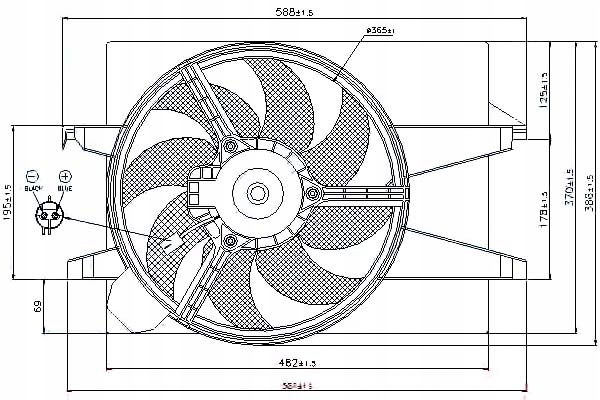
The Benefits of a Car Electric Fan
A car electric fan pulls cooling air through the radiator and engine. These are often preferred over belt-driven fans. Maradyne offers single and dual fans to cover most situations.
The mechanical radiator fans mount on a pulley and work only when the vehicle is at low speeds or idling. Electrically-powered fans operate differently and can be turned on and off depending on coolant temperature and engine RPM.
Radiator Cooling
A radiator cooling fan is an essential part of your car’s engine. It moves air through the radiator core, which helps cool the antifreeze/water mixture as it passes from the engine to the radiator for cooling. This allows the radiator to function properly and prevents overheating, which can cause internal damage to your engine.
Unlike mechanical fans, which depend on your vehicle’s rpm to turn them on, electric radiator fans are temperature controlled. This means they only come on when needed, like when your engine is at slow speeds or stopped. This is especially important for street cars and drag racing vehicles, which have high horsepower engines that can overheat if left idle for long periods of time.
Many electric fans can be configured as either “pusher” or “puller” styles, depending on where you want to mount them and the size of your radiator core. A puller style fan mounts in front of the radiator and draws air through it, while a pusher style fan mounts behind the radiator and primarily pushes air into it. Regardless of which type you choose, it is essential to use a fan shroud that improves air flow and channels the air into the radiator core.
Many cooling fans are rated by how much air they can move, which is measured in CFM (cubic feet per minute). When shopping for a new electrical radiator fan, look for a high CFM rating to ensure your radiator has enough cooling capacity.
Engine Cooling
The stock fan is a mechanical unit attached to the water pump pulley that only runs when the engine is running. This system uses a clutch to engage and disengage the fan when necessary but, it also consumes power whenever it’s turned on. This is a significant drain on fuel consumption, costing fleets thousands of dollars each year per refuse truck.
An electric cooling fan doesn’t require a clutch since it gets power from a wiring system that includes relays, fuses, and sensors. These components send signals to the car computer that determines when the fan is on and when it’s off. Some systems even have a fan control module for auto operation and monitoring.
The result of an electrical cooling fan system is a cooler engine, less noise, and more available horsepower. In fact, one of our Peterbilt 520 car electric fan cab-over trucks that was outfitted with an electric cooling fan saved an estimated 5,600 gallons of fuel each year, which makes it a great example of how much fuel can be saved by switching to an electrical system.
Once you’ve disconnected the battery, find a spot to install your switch in the back wall (firewall) of the engine compartment. Find the wire coming out of the motor and connect it to the red 12AWG terminal on your switch. Make sure to use plastic wire loom to protect the electrical connections from abrasion and rubbing against other components in your vehicle.
Air Conditioning
The airflow that an electric fan creates helps disperse heat from the engine and prevents overheating. Unlike belt-driven fans, which use the vehicle’s engine to turn them on and off, electric cooling fans come on when needed and stay on until the coolant reaches a certain temperature, or until an air conditioning cycle is activated. This means that they can reduce the electric load of your car, which can help extend battery life and improve fuel economy.
A good car electric fan will be designed to take in a large volume of air and direct it to the radiator, while also minimizing noise. In addition, it will be configured as either a pusher or puller, and it will use a fan shroud to help channel the air.
JEGS stocks a wide selection of electric fans from popular brands like Maradyne, Champion and Mishimoto. Some are a single speed, while others are multi-speed and can be controlled by the vehicle’s climate control system. Depending on the power draw of your particular fan, you may need to add an electrical wiring kit.
The engineers at Maradyne High Performance Fans have perfected their electric cooling fan design for over ten years. Their fans are spec equipment for several Nationwide and Cup Series teams, a demanding application where effective cooling is critical to success. They’ve applied this racing technology to produce a fan that is the right choice for daily drivers, street rods and muscle cars.
Noise
When a car fan makes noise while your engine is running it can be very distracting and annoying. This noise can make it difficult to carry on a conversation or listen to the radio. It can also interfere with important horn and other warning signals.
Some of the most common causes of fan noise include:
A loose fan belt.
The belt that connects the radiator fan to the motor may be loose, or it could have become worn out and damaged. If the belt is not tight enough, it can cause the fan to chirp or slap against itself when it turns. If the belt is not tight enough, the fan can also come in contact with other components in the engine bay, causing a rattling sound.
Another possibility is that the fan blades are bent or damaged. You can check this car electric fan by opening the hood of your vehicle and locating the fan. If the blades are bent or damaged, you can try straightening them with a pair of pliers. If this doesn’t work, you will need to replace the blades.
Finally, a noisy fan may be caused by a faulty fan clutch or motor. If the fan clutch is bad, the fan will not disengage when the engine coolant has cooled. This can be a very expensive repair, so it is best to have this checked out by an automotive technician.



